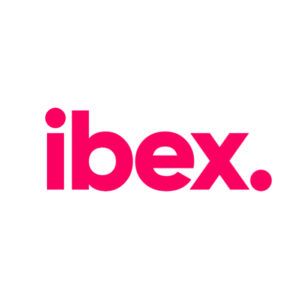At the Execs In The Know Customer Response Summit (CRS), AI took center stage. No longer a future-forward vision, it’s here, now, reshaping how global contact centers operate and deliver value. But the challenge for CX leaders isn’t deciding if to invest in AI; it’s knowing where to apply it for the greatest impact.
To provide direction and guidance, TP conducted a comprehensive study across different service delivery leaders to understand where they are finding value. What we discovered is that despite widespread ambition and countless pilot projects, a significant gap remains between potential and execution. Clients tell us that most are in the early stages of making AI work at scale and that there is a clear disconnect between strategic goals and operational reality, held back by gaps in readiness, technological limits, and the challenge of getting customers on board.
This blog post summarizes the insights from over 100 top CX leaders to understand the current state of AI adoption, the persistent importance of human agents, and the path forward for businesses looking to truly scale smart.
The State of Play: Ambition Meets a Human-Centric Reality
CX leaders are clear on their motivations for adopting AI and automation. The top two drivers are improving the customer experience and reducing costs. However, achieving these goals is proving more complex than anticipated. A major finding is that digital containment remains a significant challenge. Only 34% of enterprise leaders report that more than half of their customer interactions are fully handled by self-service or
automation.
This points to a critical area of focus: many organizations are still struggling to optimize self-service resolution and drive customer adoption across digital channels like mobile apps and websites. The data suggests a large portion of interactions, between 0% and 30%, are powered by digital or self-help tools, indicating a heavy reliance on traditional support methods.
Despite strong ambitions for automation, most organizations continue to depend heavily on human support. A striking 70% of surveyed leaders state that over half of their customer interactions are still managed by human agents. While initiatives to reduce this dependence are underway, progress is slow. This highlights a gap between ambitious strategies for automation and the actual operational readiness to implement them. The reality is that the human touch remains central to today’s customer experience.
The Evolving Role of the Human Agent
The persistence of human-led support doesn’t mean AI has no role. Instead, it signals an evolution. The future of CX isn’t about replacing humans with AI but augmenting them. The role of the human agent is rapidly shifting from handling routine inquiries to managing high-value, emotionally intelligent problem-solving.
According to TP’s study, agents are becoming resolution experts, equipped to handle interactions that automation cannot. The top scenarios best served by human agents are:
1. Complex and sensitive cases (56%)
2. Sales, retention, and commercial negotiations (28%)
3. Emotionally sensitive and high-empathy interactions (9%)
This shift is reshaping the workforce. Looking ahead one to three years, TP clients expect agent roles to evolve toward handling complex and escalated issues, focusing more on CX and empathy, and collaborating directly with AI tools. Agent augmentation, where AI is embedded into workflows to boost productivity and service quality, is a key trend. This hybrid model, blending digital efficiency with human touchpoints, is emerging as the formula for a more agile and effective customer experience.
Widespread Pilots, Limited Maturity
The journey toward scaled AI is paved with pilot programs. Nearly 70% of organizations have conducted AI pilots and projects over the last 12 to 18 months. The most common use cases being tested are:
• Agent Assist tools (69%)
• Customer-facing bots (67%)
• Interaction and sentiment analytics (64%)
• Case summarization (58%)
While experimentation is widespread, the results are still unclear for most. A massive 68% of leaders reported it was “too early to tell” if their recent AI initiatives delivered on their objectives. Only 6% confirmed that their projects “fully delivered,” while 24% said they “mostly delivered.”
This data reveals a critical bottleneck. Organizations are successfully launching pilots but are struggling to move beyond them to achieve mature, scalable implementations. The technology is being tested, but its full impact on the customer experience is still emerging.
Readiness Gaps and Implementation Hurdles
Why is it so difficult to scale AI in CX? The research points to significant readiness gaps across industries. Overall, only 30% of enterprise clients rated themselves as “High” in terms of readiness to deploy and embed AI across their operations.
Industries that are heavily regulated or complex, like Government and Insurance, show the lowest AI readiness. These sectors have a minimal presence in the high-maturity category and are concentrated in the low-maturity tier. In contrast, Technology and Healthcare show a more mixed profile, with a notable share in the “moderate” range, suggesting active experimentation but remaining implementation gaps.
When CX leaders were asked about their biggest concerns and risks, the challenges of scaling came into sharp focus. The top three risks identified were:
1. Technology and Infrastructure (25%): Barriers related to scaling AI automation.
2. CX and Customer Adoption (21%): The difficulty of getting customers to use new AI-powered tools.
3. Data Privacy and Security (16%): A persistent and critical concern in any AI implementation.
Furthermore, organizations rated their own capabilities in key areas as moderate to low. Process re-engineering and the existing tech ecosystem were identified as weak points, confirming the challenges in scaling AI solutions and driving customer adoption. This internal view aligns with the external reality: without the right foundations, scaling AI remains an uphill battle.
The Outlook for 2026: Muted Impact and Continued Experimentation
Looking ahead, what can we expect? CX leaders are planning to continue focusing on the same core AI use cases. For the next 12 to 24 months, the top planned initiatives are again agent assist tools, bots, sentiment analytics, and summarization tools. This suggests that organizations are still working to perfect and scale the foundational elements of AI in CX rather than moving on to more advanced applications.
While newer concepts like agentic AI—autonomous systems that can manage end-to-end processes—are on the radar, adoption is in its infancy. Only 47% of clients are exploring these solutions, and half of them are in the very early stages of discovery.
This cautious approach will likely mute the short-term impact of AI on interaction volumes. While client aspirations are high, our estimates show a modest 4-5% volume reduction impact by 2026. The projected impact from automation on outsourced work is expected to grow from 12% in 2025 to just under 15% in 2026. The experience from 2025 shows that given the challenges with readiness and pilot success, it will still take another 12-18 months for scalable AI solutions to mature within enterprises.
Actionable Strategies to Bridge the AI-CX Gap
The path from AI strategy to CX impact is challenging, but not impassable. Organizations can take clear, actionable steps to bridge the gap and unlock the true potential of AI.
As a valued Execs In The Know partner, TP offers the following recommendations for AI-enabled CX:
1. Prioritize Scalable and Proven Technologies
Instead of chasing every new AI trend, focus on what works. Prioritize scalable technologies like agent assist tools, customer-facing bots, and sentiment analytics. These tools boost efficiency and enhance the customer experience by enabling human agents to focus on what they do best: handling complex and emotional interactions.
2. Invest in Upskilling Your Workforce
Your human agents are more critical than ever. Invest in transforming them into specialized experts. Provide training that focuses on empathy, complex problem-solving, and negotiation. An upskilled workforce, augmented by AI, is a powerful combination that can manage sensitive cases and drive customer loyalty in ways automation alone cannot.
3. Move Beyond Pilots with a Clear Roadmap
Experimentation is valuable, but it can become a trap. To break the cycle of endless pilots, develop a clear roadmap for scaled AI adoption. This means integrating AI into core workflows, establishing sustainable deployment practices, and setting measurable goals for success. Define what a “win” looks like and build a plan to get there.
4. Address Foundational Challenges Head-On
Don’t ignore the roadblocks. Actively address key challenges, including technology infrastructure, data privacy, compliance, and financial risks. Building a robust foundation is essential for any scaling strategy. This may involve modernizing your tech stack, strengthening data governance, and creating a cross-functional team to manage change.
5. Shift Toward Consultative Partnerships
For many businesses, navigating the AI landscape alone is daunting. Shifting toward consultative, value-driven partnerships with CX experts can provide tailored solutions, continuous improvement, and industry-specific expertise. This is especially crucial for regulated sectors where AI readiness is lower and the compliance stakes are higher.
By embracing these strategies, organizations can move from ambition to impact, transforming their customer experience and building a smarter, more scalable future.
Guest post written by Jojo Pacis, Chief Transformation Officer at TP
TP is a global leader in digital business services, which consistently seeks to blend the best of advanced technology with human empathy to deliver enhanced customer care that is simpler, faster, and safer. To learn more about AI-enabled CX, visit tp.com



























































 TELUS Digital
TELUS Digital ibex delivers innovative BPO, smart digital marketing, online acquisition technology, and end-to-end customer engagement solutions to help companies acquire, engage and retain customers. ibex leverages its diverse global team and industry-leading technology, including its AI-powered ibex Wave iX solutions suite, to drive superior CX for top brands across retail, e-commerce, healthcare, fintech, utilities and logistics.
ibex delivers innovative BPO, smart digital marketing, online acquisition technology, and end-to-end customer engagement solutions to help companies acquire, engage and retain customers. ibex leverages its diverse global team and industry-leading technology, including its AI-powered ibex Wave iX solutions suite, to drive superior CX for top brands across retail, e-commerce, healthcare, fintech, utilities and logistics.






















 Trista Miller
Trista Miller




























